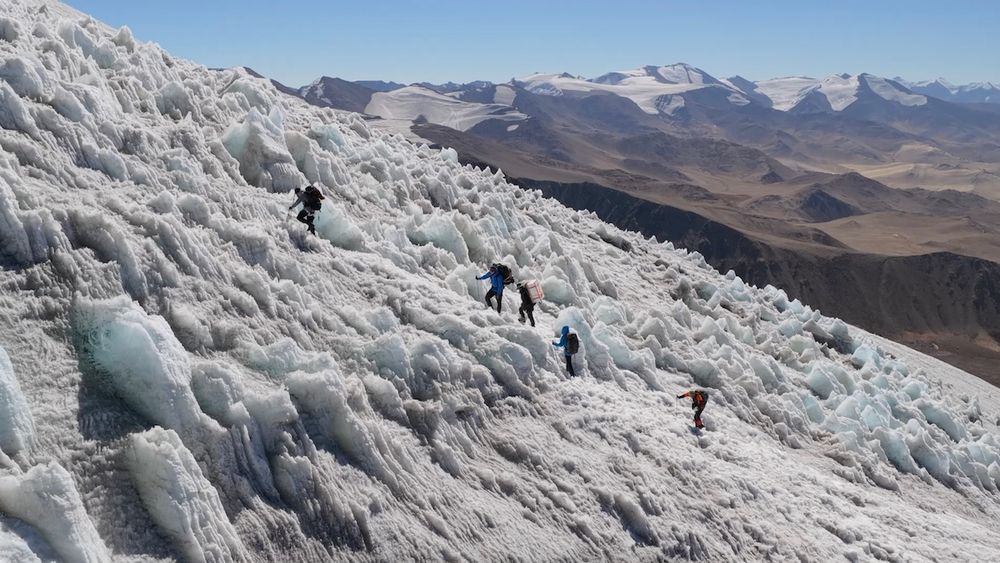#Pamir #Glacier Expedition Returns with High-Elevation #IceCores eos.org/articles/pam... ⚒️ #paleosky

#Pamir #Glacier Expedition Returns with High-Elevation #IceCores eos.org/articles/pam... ⚒️ #paleosky
"The level at that time was probably in the same range as today"
report24.news/warum-eisboh...

"The level at that time was probably in the same range as today"
report24.news/warum-eisboh...
Taking place in the 15th century, one was Kuwae near #Vanuatu, an area I was worried about, again the other is a mystery
watchers.news/epicenter/tw...

Taking place in the 15th century, one was Kuwae near #Vanuatu, an area I was worried about, again the other is a mystery
watchers.news/epicenter/tw...
Listen now on BBC Sounds: https://www.bbc.co.uk/sounds/play/w3ct702g
#ClimateScience #IceCores

Listen now on BBC Sounds: https://www.bbc.co.uk/sounds/play/w3ct702g
#ClimateScience #IceCores
Still in bed in the campervan after Storm Amy has swept through, reading a paper about #diatoms that have been found living at -15C (5F) in #IceCores from the #Arctic.
Not just surviving but actively moving and living their lives!
www.pnas.org/doi/10.1073/...

Still in bed in the campervan after Storm Amy has swept through, reading a paper about #diatoms that have been found living at -15C (5F) in #IceCores from the #Arctic.
Not just surviving but actively moving and living their lives!
www.pnas.org/doi/10.1073/...
share.google/99QuqK1rDC97...

share.google/99QuqK1rDC97...

#Greenland #Iceland #Volcano #Meteorite #ClimateChange #EarthHistory #IceCore #YoungerDryas #Geology #Earth #Volcanology #SpaceVsEarth #IceCores #Comets
the-14.com/a-volcano-or...

#Greenland #Iceland #Volcano #Meteorite #ClimateChange #EarthHistory #IceCore #YoungerDryas #Geology #Earth #Volcanology #SpaceVsEarth #IceCores #Comets
the-14.com/a-volcano-or...



interactive.carbonbrief.org/arctic-melti...

“Death in the Air: How Roman Ambition Poisoned a Continent”
open.substack.com/pub/peterfra...
#GlobalThreads #Rome #EnvironmentalHistory #Anthropocene #IceCores #ClimateHistory

“Death in the Air: How Roman Ambition Poisoned a Continent”
open.substack.com/pub/peterfra...
#GlobalThreads #Rome #EnvironmentalHistory #Anthropocene #IceCores #ClimateHistory
We know, since 1996 definitively and scientifically proved, that it is men-made
Antarctic icecores don't lie .
And never the less
First all need to be on page 1
Then we need a real global strategy..
👇 👇



We know, since 1996 definitively and scientifically proved, that it is men-made
Antarctic icecores don't lie .
And never the less
First all need to be on page 1
Then we need a real global strategy..
👇 👇



We are talking about something
We know since 1856 how it works (Eunice Foote)
We know since 1958, as Keeling started his observations on Mauna Loa, the development
And we know since the antarctic icecores the development of the last 800k yrs (1996)
We had all the facts.
1
We are talking about something
We know since 1856 how it works (Eunice Foote)
We know since 1958, as Keeling started his observations on Mauna Loa, the development
And we know since the antarctic icecores the development of the last 800k yrs (1996)
We had all the facts.
1
Shows warming cycles occur every 200 years, covers #SolarCycles, #IceCores, #OceanTemps and more
Shows warming cycles occur every 200 years, covers #SolarCycles, #IceCores, #OceanTemps and more
"New research extensively reviews the “pitfalls” of believing the conventional wisdom about modern #CO2 concentration variations, as well as the “flaws” in reconstructed CO2 values from #IceCores"
notrickszone.com/2025/03/04/n...
"New research extensively reviews the “pitfalls” of believing the conventional wisdom about modern #CO2 concentration variations, as well as the “flaws” in reconstructed CO2 values from #IceCores"
notrickszone.com/2025/03/04/n...
The Exxon mobile report Fr m the late 1970s, and first and foremost the Munich Re warning, published in 1972, should have been an indicator, what's coming.
But since 1996/97 we could compare it, scientifically, to the last mill yrs with the antarctic icecores.
We knew all and everything then.
The Exxon mobile report Fr m the late 1970s, and first and foremost the Munich Re warning, published in 1972, should have been an indicator, what's coming.
But since 1996/97 we could compare it, scientifically, to the last mill yrs with the antarctic icecores.
We knew all and everything then.


